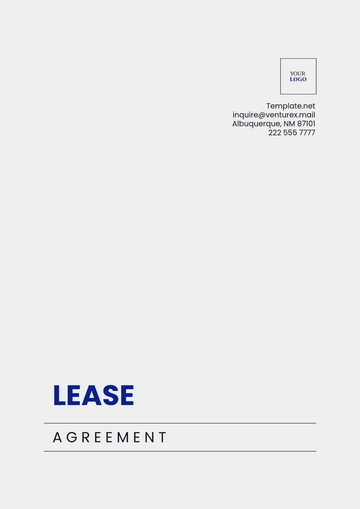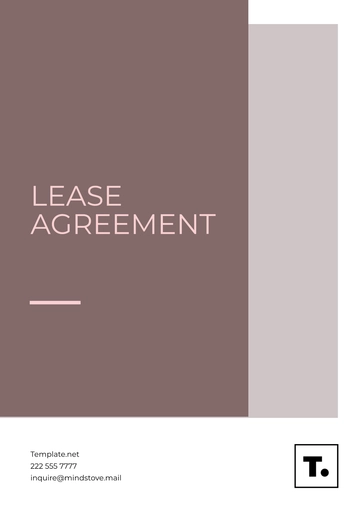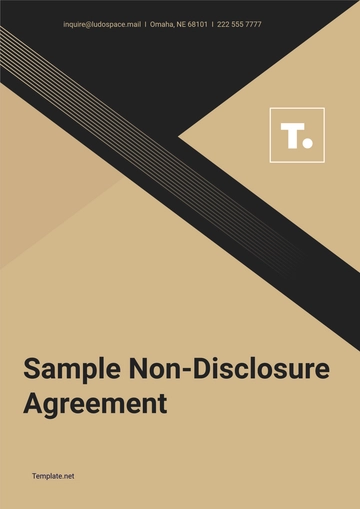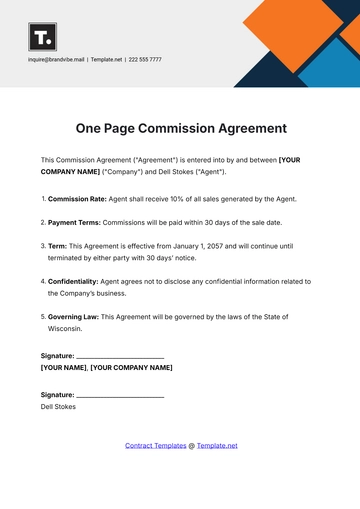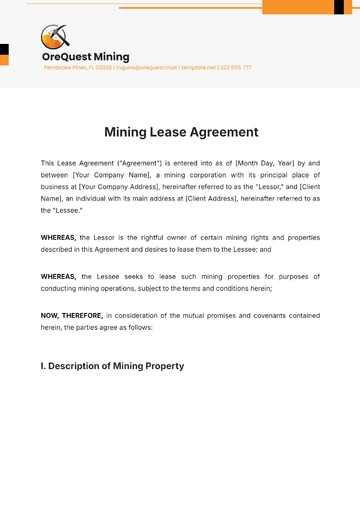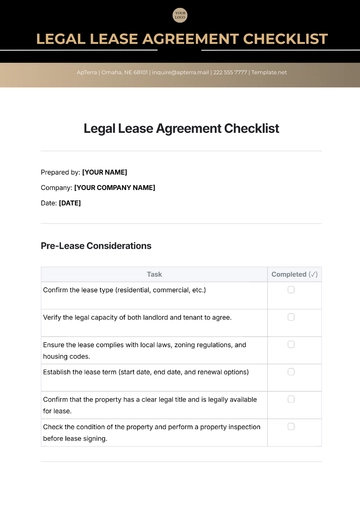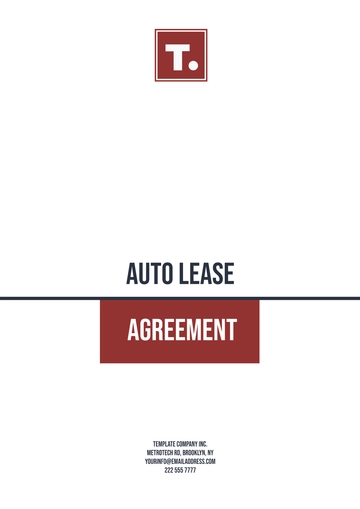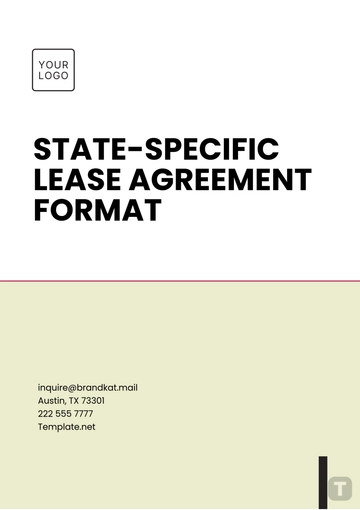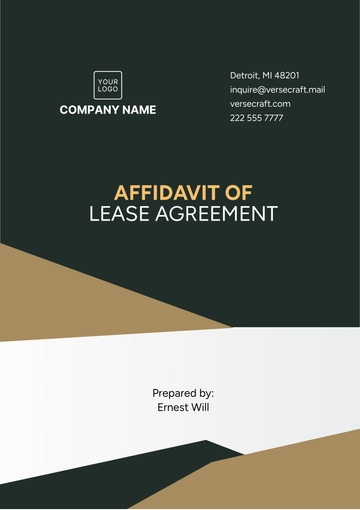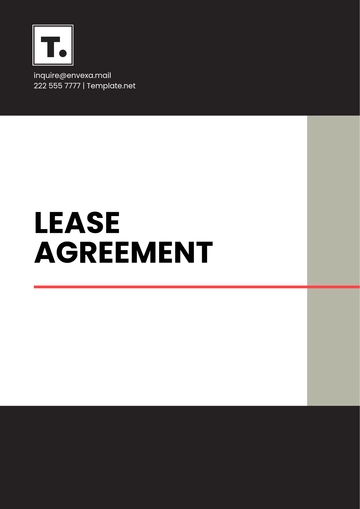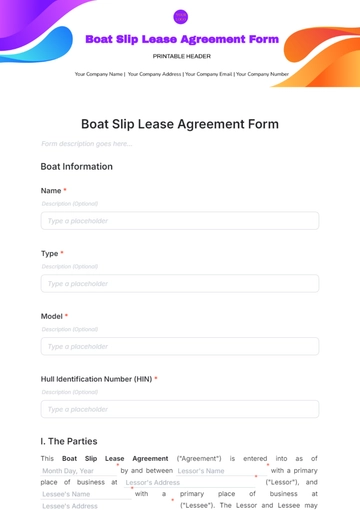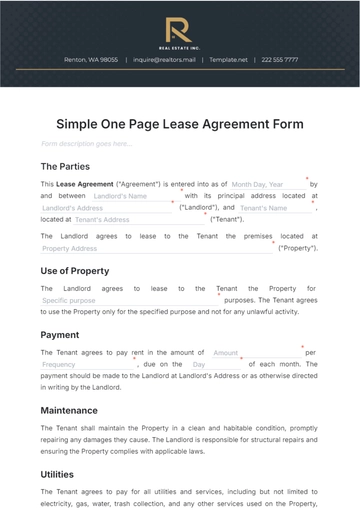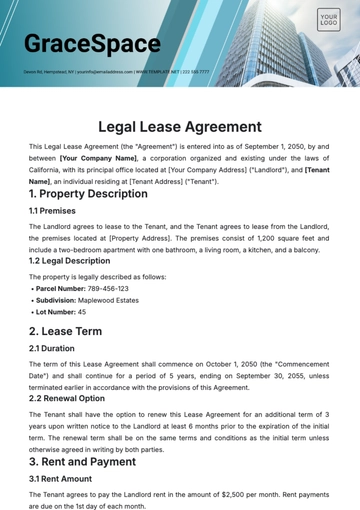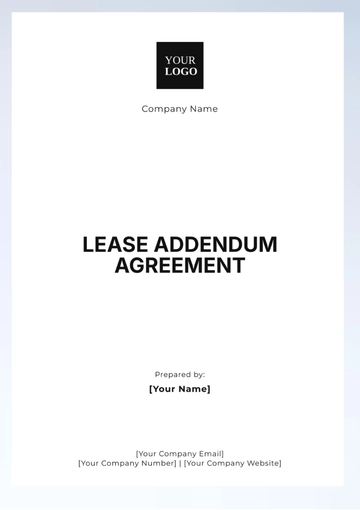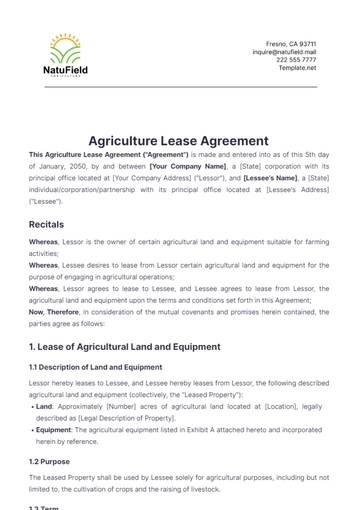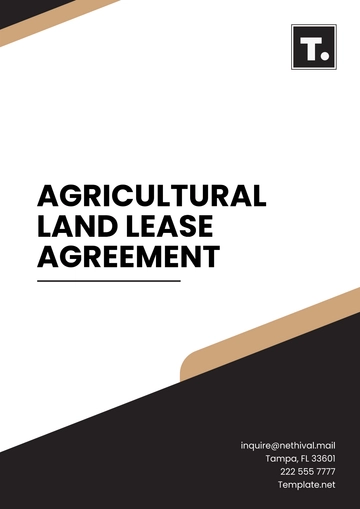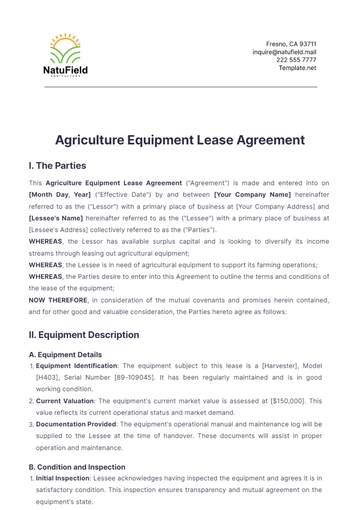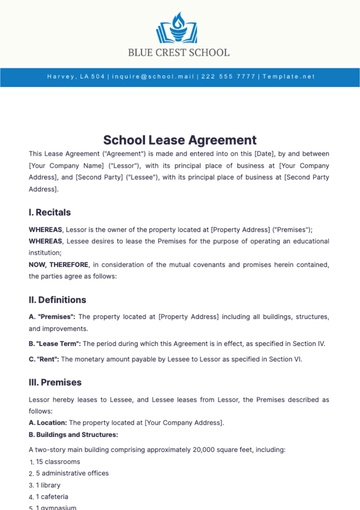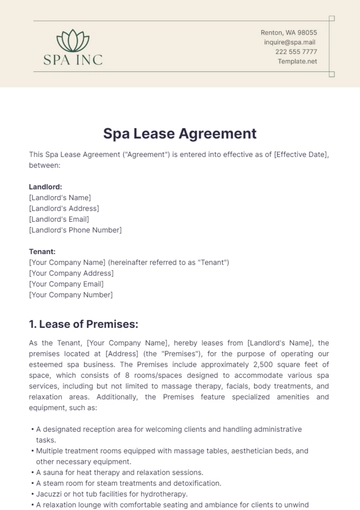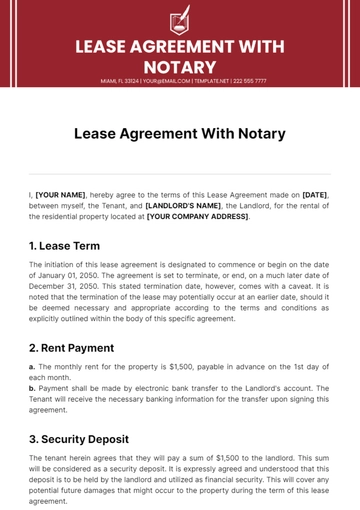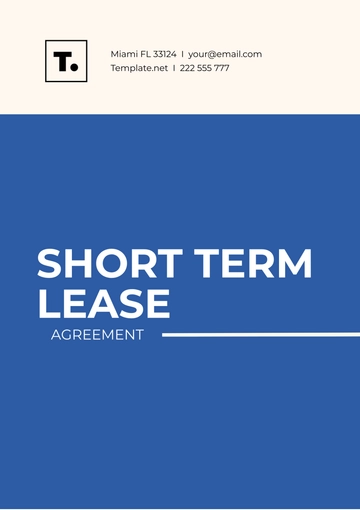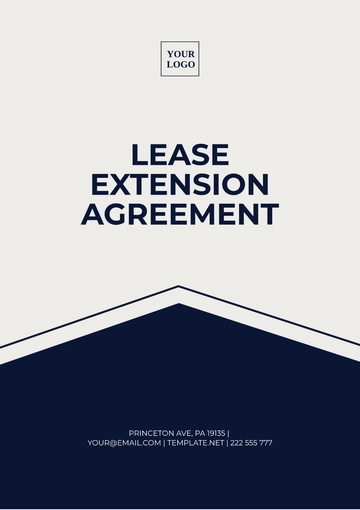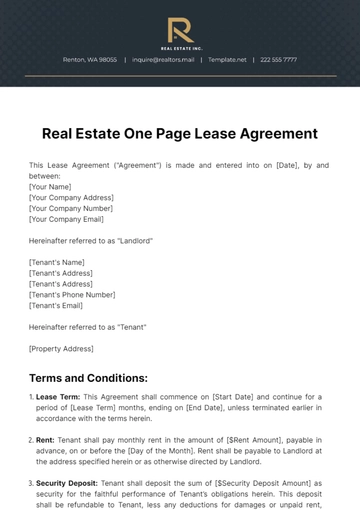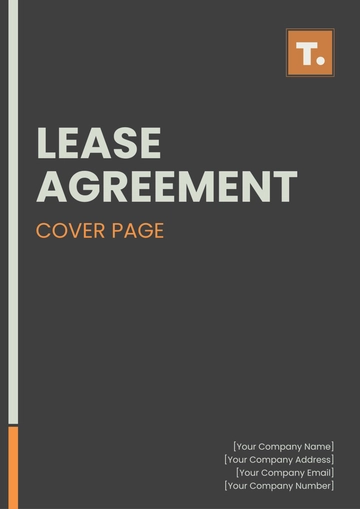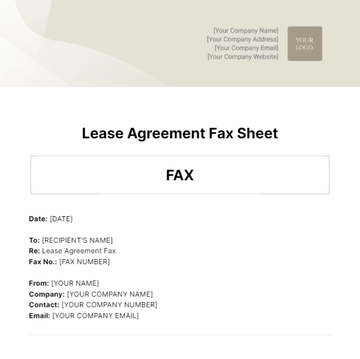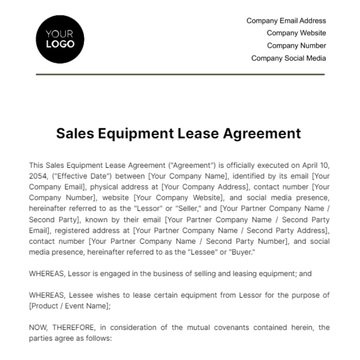Free Agriculture Equipment Lease Agreement
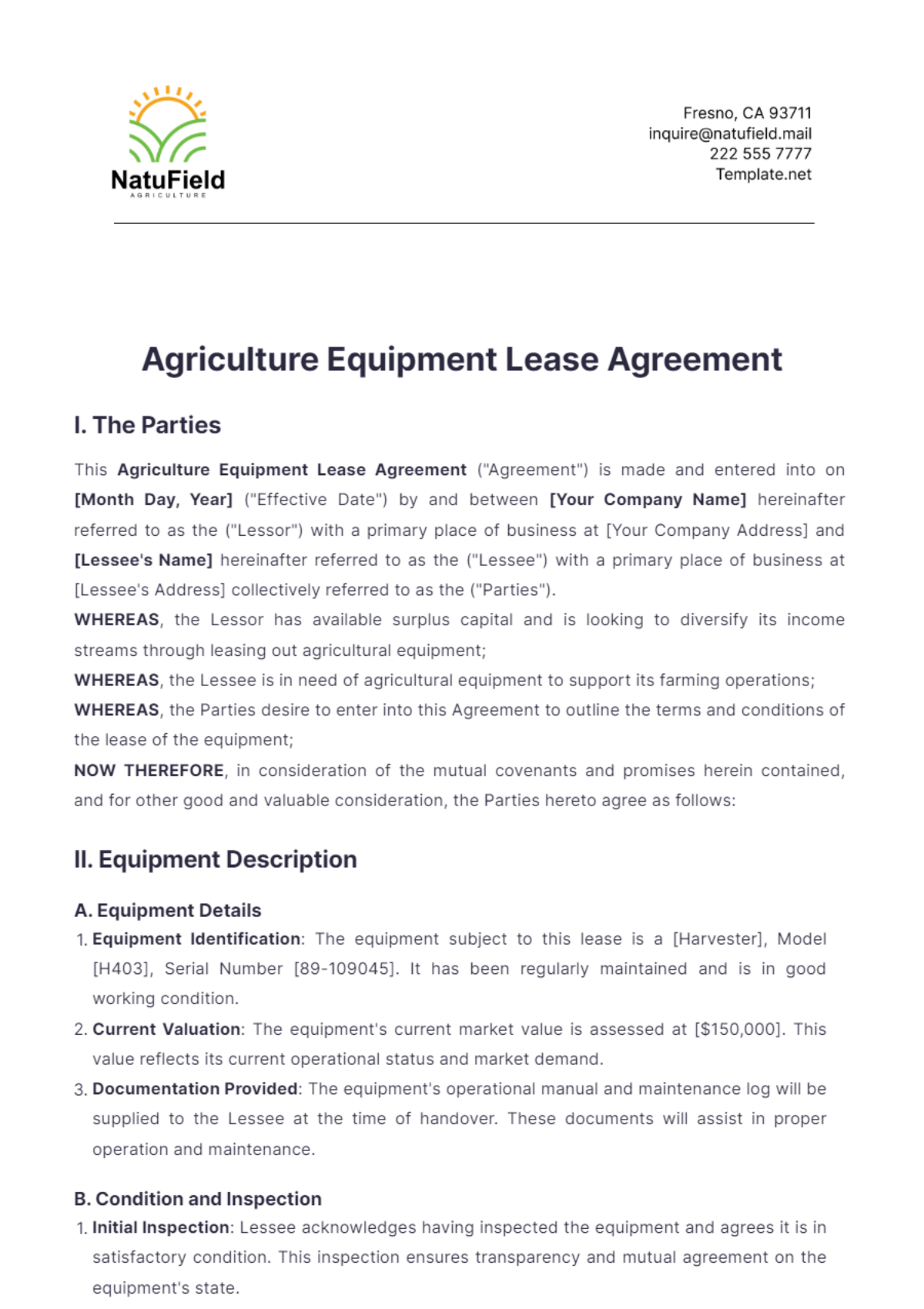
I. The Parties
This Agriculture Equipment Lease Agreement ("Agreement") is made and entered into on [Month Day, Year] ("Effective Date") by and between [Your Company Name] hereinafter referred to as the ("Lessor") with a primary place of business at [Your Company Address] and [Lessee's Name] hereinafter referred to as the ("Lessee") with a primary place of business at [Lessee's Address] collectively referred to as the ("Parties").
WHEREAS, the Lessor has available surplus capital and is looking to diversify its income streams through leasing out agricultural equipment;
WHEREAS, the Lessee is in need of agricultural equipment to support its farming operations;
WHEREAS, the Parties desire to enter into this Agreement to outline the terms and conditions of the lease of the equipment;
NOW THEREFORE, in consideration of the mutual covenants and promises herein contained, and for other good and valuable consideration, the Parties hereto agree as follows:
II. Equipment Description
A. Equipment Details
Equipment Identification: The equipment subject to this lease is a [Harvester], Model [H403], Serial Number [89-109045]. It has been regularly maintained and is in good working condition.
Current Valuation: The equipment's current market value is assessed at [$150,000]. This value reflects its current operational status and market demand.
Documentation Provided: The equipment's operational manual and maintenance log will be supplied to the Lessee at the time of handover. These documents will assist in proper operation and maintenance.
B. Condition and Inspection
Initial Inspection: Lessee acknowledges having inspected the equipment and agrees it is in satisfactory condition. This inspection ensures transparency and mutual agreement on the equipment's state.
Provision of Records: Lessor shall provide all maintenance records and warranty documents associated with the equipment. These records ensure that the Lessee is informed of the equipment's history and warranty status.
Pre-existing Damages: Any pre-existing damages or defects are documented and acknowledged by both Parties in the inspection report. This documentation protects both Parties from future disputes.
Right to Reject: Lessee shall have the right to reject the equipment if it does not meet the agreed-upon condition during the inspection. This clause ensures the Lessee receives equipment in the expected condition.
III. Term and Termination
A. Lease Term
Duration of Lease: The term of this lease shall be [12] months commencing on the Effective Date and terminating on [Month Day, Year]. This term establishes the period of equipment use.
Renewal Option: Lessee has the option to renew the lease for an additional term upon mutual agreement with the Lessor. Renewal must be agreed upon in writing at least [30] days before the expiration of the current term.
Written Renewal Agreement: Any renewal must be agreed upon in writing at least [30] days before the expiration of the current term. This ensures that both Parties are in agreement before extending the lease.
B. Termination
Notice Period for Termination: Either party may terminate this Agreement with written notice of [30] days in advance. This period allows both Parties to prepare for the end of the lease.
Immediate Termination for Breach: Termination may occur immediately if either party breaches any terms and fails to rectify within [7] days of notice. Immediate action ensures that breaches are addressed swiftly.
Return Condition of Equipment: In the event of termination, Lessee must return the equipment in good working condition, subject to normal wear and tear. This ensures that the equipment is returned in a usable state.
Settlement of Lease Payments: All incurred lease payments up to the termination date must be settled upon termination. This clause ensures that all financial obligations are met before the lease ends.
IV. Lease Payments
A. Payment Terms
Monthly Lease Fee: Lessee agrees to pay a monthly lease fee of [$3,000] for the use of the equipment. This fee covers the rental cost of the equipment.
Payment Due Date: The monthly payment is due by the [1st] day of each month during the lease term. Timely payments ensure continuous use of the equipment.
Late Payment Penalties: Late payments will incur a fee of [$50] per day following the due date. This penalty discourages late payments and ensures prompt payment.
Payment Method: All payments should be made via electronic transfer to the Lessor’s designated account. This method ensures secure and documented transactions.
B. Security Deposit
Deposit Amount: Lessee shall provide a security deposit of [$6,000], equivalent to two months of lease payments, upon signing this Agreement. This deposit acts as collateral for potential damages or unpaid lease payments.
Purpose of Deposit: The security deposit will be held as collateral for any damages or unpaid lease payments. It provides financial security for the Lessor.
Refund Conditions: Upon termination and return of the equipment in good condition, the security deposit will be refunded to the Lessee within [30] days. This ensures the Lessee receives their deposit back if conditions are met.
Itemized Deductions: Any deductions from the security deposit will be itemized and communicated to the Lessee in writing. This transparency ensures the Lessee understands any deductions made.
V. Maintenance and Repairs
A. Lessor Responsibilities
Routine Maintenance: Lessor shall provide all necessary maintenance and repair services for the duration of the lease term. This includes routine maintenance as per the manufacturer’s guidelines, conducted at no additional cost to the Lessee.
Major Repairs: Any major repairs due to normal wear and tear will be the responsibility of the Lessor. This ensures that the Lessee is not burdened with significant repair costs.
Transportation for Repairs: Lessor shall bear the cost of transportation for any repairs requiring off-site service. This clause ensures that the Lessee does not incur extra costs for necessary repairs.
B. Lessee Responsibilities
Operation Guidelines: Lessee agrees to operate the equipment as per the manufacturer’s guidelines and within the prescribed operating conditions. This ensures safe and proper use of the equipment.
Immediate Notification: Lessee shall notify the Lessor immediately of any issues or breakdowns encountered with the equipment. Prompt notification helps in timely repairs and maintenance.
Day-to-Day Maintenance: All minor and day-to-day maintenance tasks, such as cleaning and lubrication, will be undertaken by the Lessee. This keeps the equipment in good working condition.
Repair Costs for Negligence: Any damages caused due to negligence or misuse by the Lessee will be repaired at the Lessee’s expense. This ensures that the Lessee is responsible for any avoidable damages.
VI. Insurance
A. Lessor's Insurance
Coverage Against Risks: Lessor shall maintain insurance coverage for the equipment against risks such as theft, fire, and natural disasters. This ensures that the equipment is protected against significant risks.
Full Replacement Value: Insurance policies will cover the full replacement value of the equipment. This coverage ensures that the equipment can be replaced if necessary.
Provision of Policy: Lessor shall provide the Lessee with a copy of the insurance policy upon execution of this Agreement. This allows the Lessee to be aware of the coverage details.
B. Lessee's Insurance
Liability Insurance Requirement: Lessee is required to maintain liability insurance covering the operation and use of the equipment. This insurance protects against third-party claims.
Coverage Limits: The liability insurance must have coverage limits of no less than [$1,000,000] per occurrence. Adequate coverage ensures substantial protection.
Proof of Insurance: Proof of insurance must be provided to the Lessor before the equipment is handed over. This ensures that the Lessee has obtained the necessary coverage.
Additional Insured: Lessee agrees to list the Lessor as an additional insured on their liability insurance policy. This inclusion provides additional protection for the Lessor.
VII. Use of Equipment
A. Authorized Use
Lawful Agricultural Purposes: The equipment shall only be used for lawful agricultural purposes as intended by the manufacturer. Proper use ensures compliance with legal and operational guidelines.
Regulatory Compliance: Lessee must comply with all local, state, and federal regulations governing the operation of agricultural equipment. Adherence to regulations ensures legal use of the equipment.
Qualified Operators: The equipment is to be operated only by qualified personnel trained in its use. This ensures safe and efficient operation.
Prohibition of Subleasing: Lessee is prohibited from subleasing or renting out the equipment to any third party. This clause ensures that the equipment remains under the control of the Lessee.
Alterations and Modifications: Lessee shall not make any alterations or modifications to the equipment without prior written consent from the Lessor. This prevents unauthorized changes that could affect the equipment’s performance.
B. Location
Primary Location: The equipment will be used primarily at [Lessee’s Farm Location] and should not be transported to other locations without Lessor’s approval. This ensures the Lessor knows where the equipment is being used.
Field Operations Radius: Any transportation required for field operations within a [50]-mile radius should be communicated to the Lessor in advance. This keeps the Lessor informed of the equipment’s movements.
Security Measures: Lessee is responsible for securing the equipment against theft, vandalism, or damage when not in use. Proper security measures protect the equipment from potential risks.
VIII. Indemnification
A. Indemnity by Lessee
Hold Harmless Clause: Lessee agrees to indemnify and hold harmless the Lessor from any claims, damages, or liabilities arising from Lessee’s use of the equipment. This indemnity covers the Lessor against third-party claims.
Legal Fees and Costs: This indemnification extends to legal fees and costs incurred by the Lessor in defending against such claims. Coverage of legal expenses ensures financial protection for the Lessor.
Survival of Obligations: Lessee’s indemnity obligations survive the termination of this Agreement. This clause ensures ongoing protection for the Lessor even after the Agreement ends.
B. Indemnity by Lessor
Breach of Agreement: Lessor agrees to indemnify and hold harmless the Lessee from any claims or damages arising from Lessor’s breach of this Agreement. This indemnity ensures that the Lessee is protected against breaches by the Lessor.
Exclusion for Negligence: This indemnification does not extend to damages caused by the Lessee’s negligence or misuse of the equipment. The Lessee remains responsible for their own actions.
Legal Fees Coverage: Lessor is responsible for legal fees and costs incurred in defending any claims arising from their obligations under this Agreement. This ensures financial protection for the Lessee.
IX. Compliance with Laws
A. Farm Equipment Regulations
Adherence to Laws: Both Parties agree to comply with all applicable laws and regulations governing the leasing and use of agricultural equipment. Legal compliance ensures lawful operation.
Permits and Licenses: Lessee agrees to obtain any necessary permits or licenses required for the operation of the equipment. This ensures that all legal requirements are met.
Consequences of Non-Compliance: Failure to comply with legal requirements may result in immediate termination of this Agreement. This clause enforces the importance of legal adherence.
B. Safety Standards
Manufacturer’s Safety Guidelines: Lessee agrees to adhere to all safety standards and guidelines provided by the equipment manufacturer. Following these guidelines ensures safe operation.
Operator Training: All operators must undergo training and certification in the safe use of the equipment. This training ensures that the equipment is used correctly and safely.
Safety Audits: Periodic safety audits may be conducted by the Lessor to ensure compliance with safety standards. These audits help maintain high safety standards.
X. Governing Law
A. Jurisdiction
Applicable Law: This Agreement shall be governed by and construed in accordance with the laws of the state of [State Name]. The applicable law ensures clarity on legal matters.
Legal Proceedings: Any legal proceedings arising out of this Agreement shall be brought in the courts of [State Name]. This establishes the venue for resolving disputes.
B. Dispute Resolution
Mediation First: In the event of any disputes, the Parties agree to first seek resolution through mediation. Mediation encourages a mutually agreeable resolution.
Binding Arbitration: If mediation is unsuccessful, the dispute may be resolved through binding arbitration in [State Name]. Arbitration provides a final and binding resolution.
XI. Miscellaneous
A. Notices
Delivery of Notices: All notices concerning this Agreement shall be in writing and delivered personally, by certified mail, or by a recognized overnight courier service. This ensures that all communications are documented and verifiable.
Notice Address for Lessor: Notices to the Lessor shall be sent to [Your Company Address]. This specifies the Lessor’s address for receiving communications.
Notice Address for Lessee: Notices to the Lessee shall be sent to [Lessee's Address]. This specifies the Lessee’s address for receiving communications.
B. Entire Agreement
Comprehensive Agreement: This Agreement constitutes the entire agreement between the Parties concerning the lease of the equipment. This clause ensures that all terms are included in this document.
Amendments and Modifications: Any amendments or modifications to this Agreement must be in writing and signed by both Parties. This requirement ensures that changes are agreed upon by both Parties.
Reliance on Representations: Each party acknowledges that it has not relied upon any representations or statements not set forth herein. This ensures that all understandings are included in the Agreement.
C. Severability
Validity of Remaining Provisions: If any provision of this Agreement is found to be invalid or unenforceable, the remainder of the Agreement shall continue in full force and effect. This ensures that the rest of the Agreement remains effective.
Modification of Invalid Provisions: The invalid or unenforceable provision shall be deemed modified to the minimum extent necessary to make it valid and enforceable. This modification ensures that the provision is adapted to be enforceable.
Severance of Invalid Provisions: If such modification is not possible, the invalid provision shall be deemed severed from the Agreement, and the remaining provisions shall remain valid and enforceable. This clause ensures that the Agreement remains operational despite any invalid provisions.
XII. Signatures
IN WITNESS WHEREOF, the Parties hereto have executed this Lease Agreement as of the Effective Date.
Lessor

[Authorized Representative Name]
[Your Company Name]
Date: [Month Day, Year]
Lessee

[Lessee's Name]
Date: [Month Day, Year]
- 100% Customizable, free editor
- Access 1 Million+ Templates, photo’s & graphics
- Download or share as a template
- Click and replace photos, graphics, text, backgrounds
- Resize, crop, AI write & more
- Access advanced editor
Streamline equipment leasing with our Agriculture Equipment Lease Agreement Template from Template.net! This template includes editable fields to customize the agreement to your leasing terms. Customizable sections allow you to incorporate specific clauses. The AI Editor Tool enhances efficiency, ensuring quick and accurate lease agreement creation tailored to your requirements!
You may also like
- Lease Agreement
- Non Compete Agreement
- Rental Agreement
- Prenuptial Agreement
- Non Disclosure Agreement
- Operating Agreement
- Hold Harmless Agreement
- LLC Operating Agreement
- Arbitration Agreement
- Purchase Agreement
- Residential Lease Agreement
- Executive Agreement
- Confidentiality Agreement
- Contractor Agreement
- Partnership Agreement
- Postnuptial Agreement
- Collective Bargaining Agreement
- Loan Agreement
- Roommate Agreement
- Commercial Lease Agreement
- Separation Agreement
- Cohabitation Agreement
- Room Rental Agreement
- Child Custody Agreement
- Employee Agreement
- License Agreements
- Settlement Agreement
- Joint Venture Agreement
- Indemnity Agreement
- Subordination Agreement
- Sales Agreement
- Agreements Between Two Parties
- Business Agreement
- Real Estate Agreement
- HR Agreement
- Service Agreement
- Property Agreement
- Agreement Letter
- Restaurant Agreement
- Construction Agreement
- Finance Agreement
- Marketing Agreement
- Payment Agreement
- Investment Agreement
- Management Agreement
- Nonprofit Agreement
- Software Agreement
- Startup Agreement
- Agency Agreement
- Copyright Agreement
- Collaboration Agreement
- Reseller Agreement
- Car Rental Agreement
- Cleaning Services Agreement
- Consultant Agreement
- Deed Agreement
- Car Agreement
- Equipment Agreement
- Shares Agreement
- Data Sharing Agreement
- Advertising Agreement
- School Agreement
- Franchise Agreement
- Event Agreement
- Travel Agency Agreement
- Vehicle Agreement
- Board Resolution Agreement
- Land Agreement
- Binding Agreement
- Tenancy Agreement
- Exclusive Agreement
- Development Agreement
- Assignment Agreement
- Design Agreement
- Equity Agreement
- Mortgage Agreement
- Purchase and Sale Agreement
- Shareholder Agreement
- Vendor Agreement
- Royalty Agreement
- Vehicle Lease Agreement
- Hotel Agreement
- Tenant Agreement
- Artist Agreement
- Commission Agreement
- Consignment Agreement
- Debt Agreement
- Recruitment Agreement
- Training Agreement
- Transfer Agreement
- Apprenticeship Agreement
- IT and Software Agreement
- Referral Agreement
- Resolution Agreement
- Waiver Agreement
- Consent Agreement
- Partner Agreement
- Social Media Agreement
- Customer Agreement
- Credit Agreement
- Supply Agreement
- Agent Agreement
- Brand Agreement
- Law Firm Agreement
- Maintenance Agreement
- Mutual Agreement
- Retail Agreement
- Deposit Agreement
- Land Purchase Agreement
- Nursing Home Agreement
- Supplier Agreement
- Buy Sell Agreement
- Child Support Agreement
- Landlord Agreement
- Payment Plan Agreement
- Release Agreement
- Research Agreement
- Sponsorship Agreement
- Buyout Agreement
- Equipment Rental Agreement
- Farm Agreement
- Manufacturing Agreement
- Strategic Agreement
- Termination of Lease Agreement
- Compliance Agreement
- Family Agreement
- Interior Design Agreement
- Ownership Agreement
- Residential Lease Agreement
- Retainer Agreement
- Trade Agreement
- University Agreement
- Broker Agreement
- Dissolution Agreement
- Funding Agreement
- Hosting Agreement
- Investor Agreement
- Memorandum of Agreement
- Advisory Agreement
- Affiliate Agreement
- Freelancer Agreement
- Grant Agreement
- Master Service Agreement
- Parking Agreement
- Subscription Agreement
- Trust Agreement
- Cancellation Agreement
- Horse Agreement
- Influencer Agreement
- Membership Agreement
- Vacation Rental Agreement
- Wholesale Agreement
- Author Agreement
- Distributor Agreement
- Exchange Agreement
- Food Agreement
- Guarantee Agreement
- Installment Agreement
- Internship Agreement
- Music Agreement
- Severance Agreement
- Software Development Agreement
- Storage Agreement
- Facility Agreement
- Intercompany Agreement
- Lending Agreement
- Lodger Agreement
- Outsourcing Services Agreement
- Usage Agreement
- Assurance Agreement
- Photography Agreement
- Profit Sharing Agreement
- Relationship Agreement
- Rent To Own Agreement
- Repayment Agreement
- Volunteer Agreement
- Co Parenting Agreement
- HVAC Agreement
- Lawn Care Agreement
- SAAS Agreement
- Work from Home Agreement
- Coaching Agreement
- Protection Agreement
- Security Agreement
- Repair Agreement
- Agreements License
